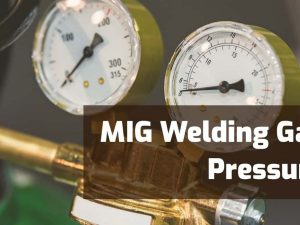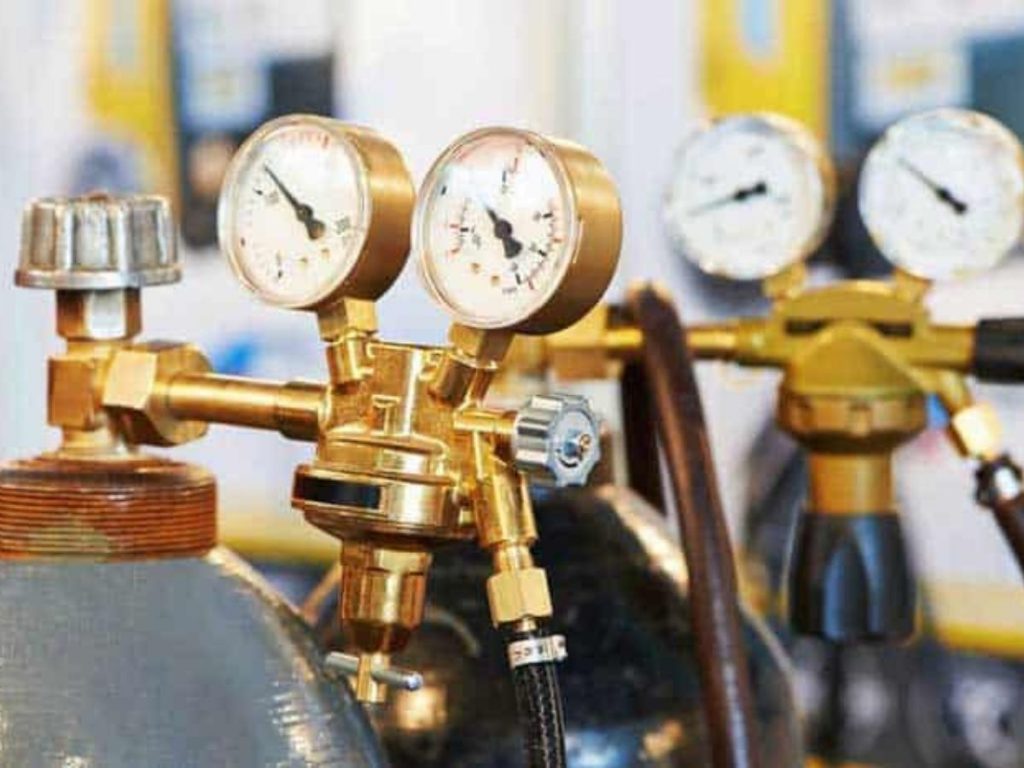Why the Right Gas is Important for MIG Welding
MIG welding is a commonly used welding process, especially in industrial and production settings. MIG stands for Metal Inert Gas. This type of welding uses a wire that is continuously fed through the welding torch while an electrical current melts it. The molten weld puddle created by the electrical current fuses the base metals. This joins them both physically and chemically.
MIG welding is a great way to join two pieces of metal together. But for it to work properly, you need to use the right gas. In this blog post, we’ll explain why the right gas is important for MIG welding and how to choose the right one for your project.
Why is using the right gas so important for MIG welding? The gas you use protects the weld puddle from contamination. It also helps to transfer heat evenly across the joint to be welded. Argon and carbon dioxide are two of the most popular gases used in MIG welding.
The Best Gas for MIG Welding Aluminum
When it comes to choosing a gas for MIG welding aluminum, argon is king. In fact, nearly 100% argon mixtures are often used. A small amount of oxygen can be added to this mixture, but too much will cause problems with the weld puddle’s stability.
Aluminum is a difficult metal to weld. It’s highly reactive, which means it can easily oxidize when exposed to air. This makes it important to use the right type of gas when MIG welding aluminum. The most common gas used for MIG welding aluminum is argon. Argon is an inert gas, which means it won’t react with aluminum. This makes it ideal for welding applications.
Another common gas used for MIG welding aluminum is helium. Helium is also an inert gas, but it has a higher boiling point than argon. This makes it ideal for use in high-temperature applications.
The final gas that’s often used for MIG welding aluminum is nitrogen. Nitrogen is a non-reactive gas, but it’s not as inert as argon or helium. This means that it can still react with aluminum, but to a lesser extent than other gases. Nitrogen is often used in combination with other gases, such as oxygen, to help reduce the risk of oxidation during the welding process.
MIG welding aluminum can be a difficult process, but using the right gas can make it much easier. Argon, helium, and nitrogen are all common gases used for MIG welding aluminum. Each has its own advantages and disadvantages, so you’ll need to decide which one is best for your project.

The Best Gas for MIG Welding Mild Steel
For mild steel, a carbon dioxide/argon mix is typically used. The most popular proportions are 75% argon / 25% carbon dioxide and 90% argon / 10% carbon dioxide. Higher carbon dioxide percentages can be used, but they generally don’t provide any significant advantages over lower percentages.
There are three common gases that can be used for MIG welding mild steel; these are argon, carbon dioxide, and oxygen. Each gas has its own advantages and disadvantages that should be considered before making a decision.
- Argon is often considered the best gas for MIG welding mild steel because it provides a good balance between weld penetration and bead appearance. Argon is also less likely to cause porosity in the weld than oxygen or carbon dioxide. However, argon is more expensive than the other two gases and can be harder to find.
- Carbon dioxide is often used as an alternative to argon because it is less expensive and easier to find. Carbon dioxide also produces deeper welds than argon; however, it can cause porosity in the weld and make the bead appearance less desirable.
- Oxygen can be used for MIG welding mild steel but should only be used if other gases are not available. Oxygen produces shallow welds and can cause porosity; however, it is less expensive than argon or carbon dioxide.
In conclusion, the best gas for MIG welding mild steel is argon because it provides a good balance between weld penetration and bead appearance. Argon is also less likely to cause porosity in the weld than oxygen or carbon dioxide; however, it is more expensive than the other two gases and can be harder to find. If argon is not available or if you are looking for an cheaper option, carbon dioxide can be used; however, it may cause porosity in the weld and make the bead appearance less desirable. Oxygen can be used but should only be used if other gases are not available as it produces shallow welds and can cause porosity.
Why Argon is Used in Both Aluminum and Mild Steel Welding
While different gases are typically used for aluminum and mild steel welding, argon can actually be used for both applications. The only time you wouldn’t want to use an argon-based gas is when you’re welding non-ferrous metals like copper or brass.
Argon is an inert gas that is often used in welding. Inert gases are gases that do not chemically react with other elements. Argon is used because it prevents oxidation of the weld area. Oxidation is when a material combines with oxygen, and this can cause welds to be weak and brittle.
Welders use argon to shield the weld area from oxygen and other atmospheric contaminants. When these contaminants come into contact with the welding arc, they can cause weld defects such as porosity (holes) or inclusions (foreign matter in the weld). Porosity and inclusions can make welds weaker and more likely to fail.
Argon has a number of benefits for both aluminum and mild steel welding. First, argon is less expensive than other inert gases. Second, argon is more effective at preventing oxidation than other gases. Third, argon is less likely to contaminate the weld area than other gases. Finally, argon makes it easier to achieve a high-quality weld.
When welding aluminum, argon provides a number of benefits. First, argon prevents oxidation of the weld area. Second, argon makes it easier to achieve a high-quality weld. Third, argon prevents contamination of the weld area. Fourth, argon is less expensive than other inert gases. Fifth, argon is more effective at preventing oxidation than other gases. Sixth, argon is less likely to contaminate the weld area than other gases.
Argon has many benefits for both aluminum and mild steel welding. It is less expensive than other inert gases, more effective at preventing oxidation, and less likely to contaminate the weld area. Argon also makes it easier to achieve a high-quality weld. When welding aluminum, argon should be your gas of choice.
Conclusion:
Now that you know why using the right gas is so important for MIG welding and what some of the best options are, you can make sure you always get great results on your projects, no matter what materials you’re working with. Remember, argon is typically best for aluminum, a carbon dioxide/argon mix is usually best for mild steel, and pure carbon dioxide should be used when welding non-ferrous metals such as copper or brass. When choosing a gas, make sure to consider what type of metal you’re welding and what thickness of metal you’re welding so that you choose the right one for your project. With the right gas, you can weld like a pro!

